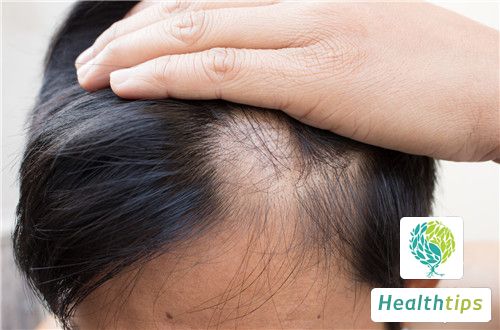Physiological hair loss is actually nothing to worry about, as our hair naturally falls out every day. As long as the hair follicles on the scalp are not damaged, hair will continue to grow. However, in cases of allergic or pathological hair loss, treatment is necessary. Generally speaking, both seborrheic dermatitis and neurological hair loss can lead to baldness. Treating the underlying cause can effectively alleviate hair loss symptoms.
 1. Androgenetic alopecia is an autosomal dominant inheritance, and its genetic characteristics are manifested only under the action of androgens.
2. Neurological hair loss often occurs when there is excessive mental stress. Under the influence of mental stress, the body's erector pili muscles contract, causing the hair to stand upright. This can disrupt the function of the autonomic nervous system or central nervous system, leading to changes and malnutrition in the hair follicles and hair papillae. This can result in the inhibition of hair growth, causing the hair to enter a resting phase and ultimately leading to hair loss.
3. Endocrine hair loss occurs when the growth of hair is affected by various endocrine hormones. Therefore, endocrine disorders often lead to hair loss diseases, such as postpartum and menopausal hair loss.
4. Nutritional hair loss refers to changes in hair quality and color caused by malnutrition and abnormal metabolism in the body. Severe malnutrition can even lead to diffuse hair loss.
5. Physical hair loss is commonly caused by physical factors such as mechanical stimulation and exposure to radioactive substances.
6. Chemical hair loss occurs when chemical factors cause changes in hair color or even hair loss.
7. Infectious hair loss involves various pathogens as an important factor in hair diseases, including bacteria, viruses, fungi, spirochetes, and parasites.
8. Symptomatic hair loss refers to hair loss associated with certain systemic or local diseases.
9. Congenital alopecia is caused by developmental defects that result in complete absence or sparsity of hair. Patients may have fine and sparse hair, or normal hair at birth that falls out and does not regrow soon after. This can be classified as isolated defects or other malformations.
10. Seasonal hair loss is more common in summer due to high temperatures and dilated pores, while it is less common in autumn and winter when temperatures drop and pores close.
1. Androgenetic alopecia is an autosomal dominant inheritance, and its genetic characteristics are manifested only under the action of androgens.
2. Neurological hair loss often occurs when there is excessive mental stress. Under the influence of mental stress, the body's erector pili muscles contract, causing the hair to stand upright. This can disrupt the function of the autonomic nervous system or central nervous system, leading to changes and malnutrition in the hair follicles and hair papillae. This can result in the inhibition of hair growth, causing the hair to enter a resting phase and ultimately leading to hair loss.
3. Endocrine hair loss occurs when the growth of hair is affected by various endocrine hormones. Therefore, endocrine disorders often lead to hair loss diseases, such as postpartum and menopausal hair loss.
4. Nutritional hair loss refers to changes in hair quality and color caused by malnutrition and abnormal metabolism in the body. Severe malnutrition can even lead to diffuse hair loss.
5. Physical hair loss is commonly caused by physical factors such as mechanical stimulation and exposure to radioactive substances.
6. Chemical hair loss occurs when chemical factors cause changes in hair color or even hair loss.
7. Infectious hair loss involves various pathogens as an important factor in hair diseases, including bacteria, viruses, fungi, spirochetes, and parasites.
8. Symptomatic hair loss refers to hair loss associated with certain systemic or local diseases.
9. Congenital alopecia is caused by developmental defects that result in complete absence or sparsity of hair. Patients may have fine and sparse hair, or normal hair at birth that falls out and does not regrow soon after. This can be classified as isolated defects or other malformations.
10. Seasonal hair loss is more common in summer due to high temperatures and dilated pores, while it is less common in autumn and winter when temperatures drop and pores close.




















